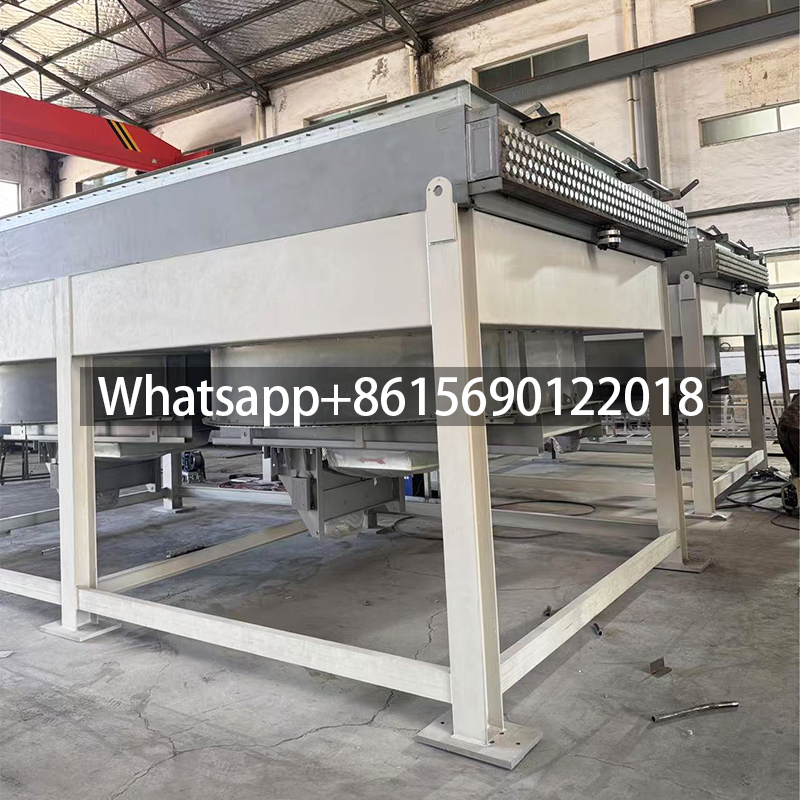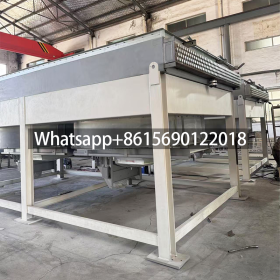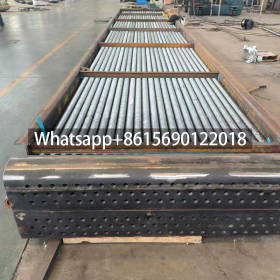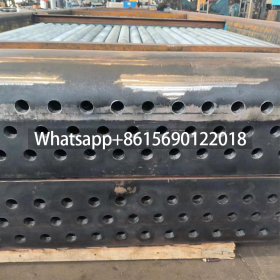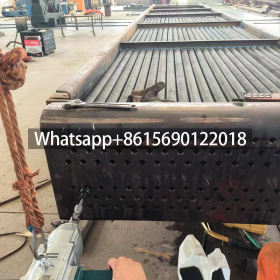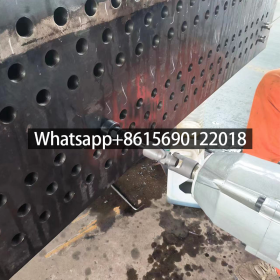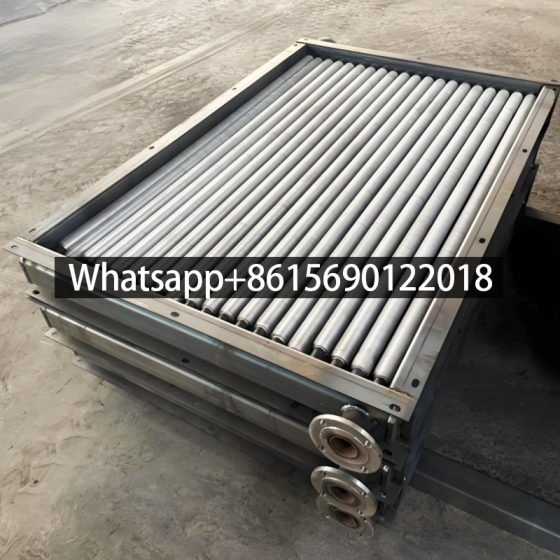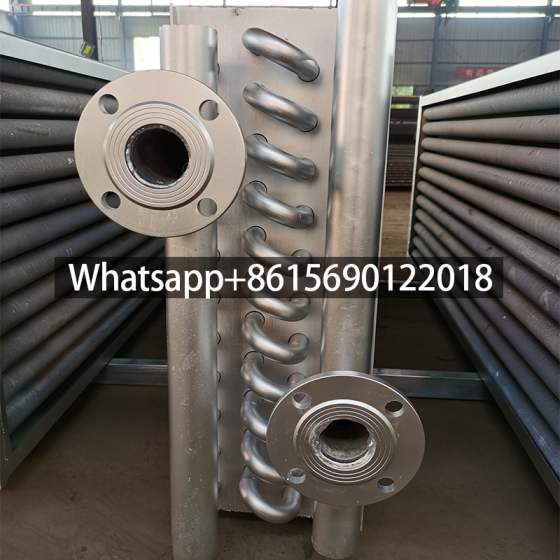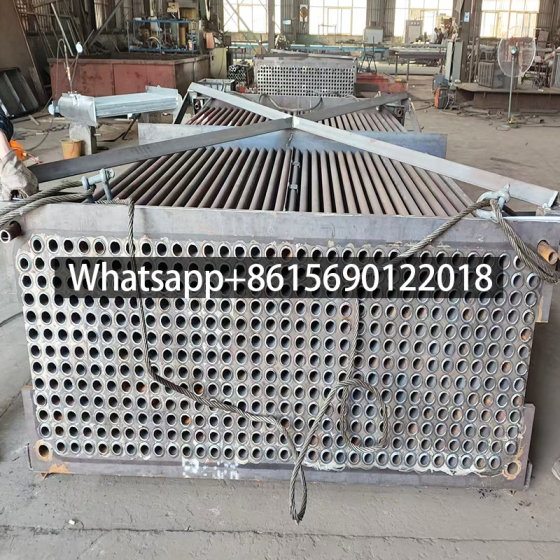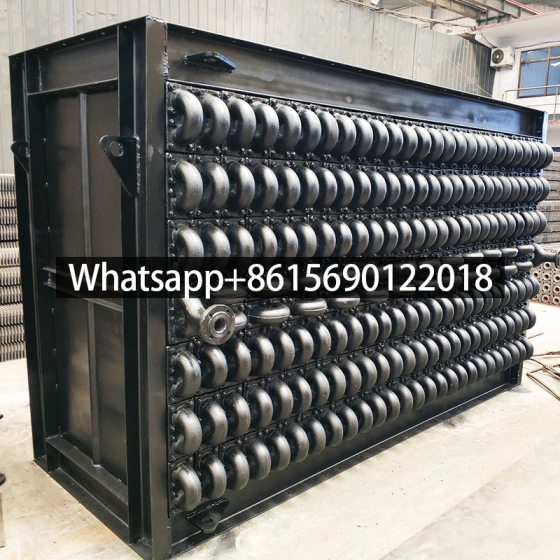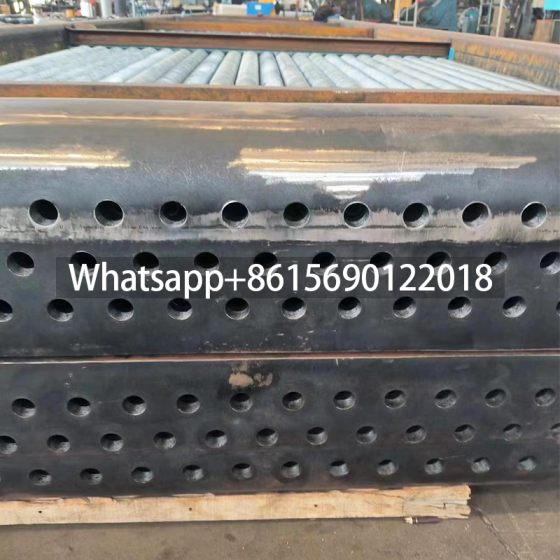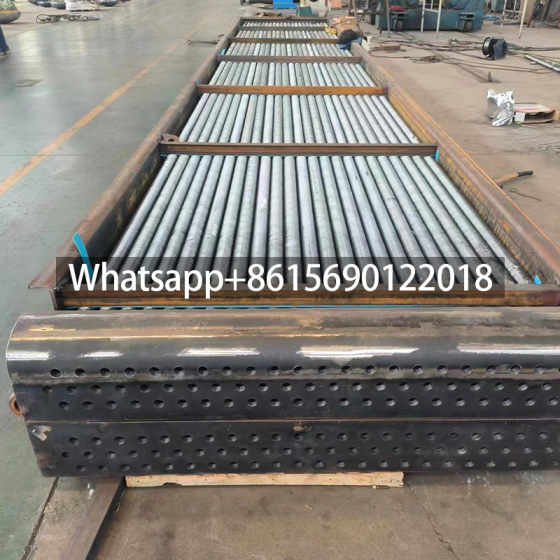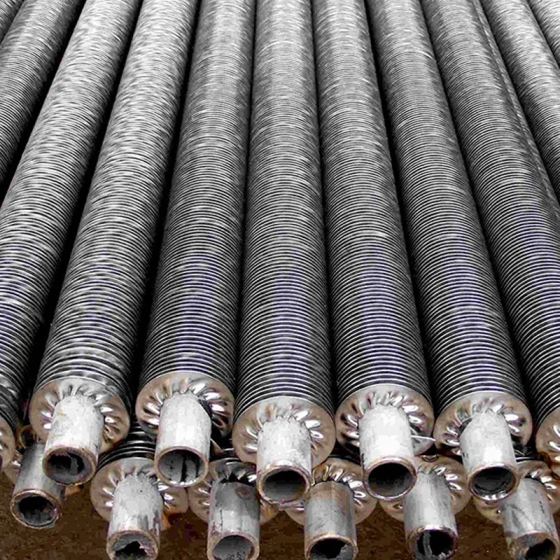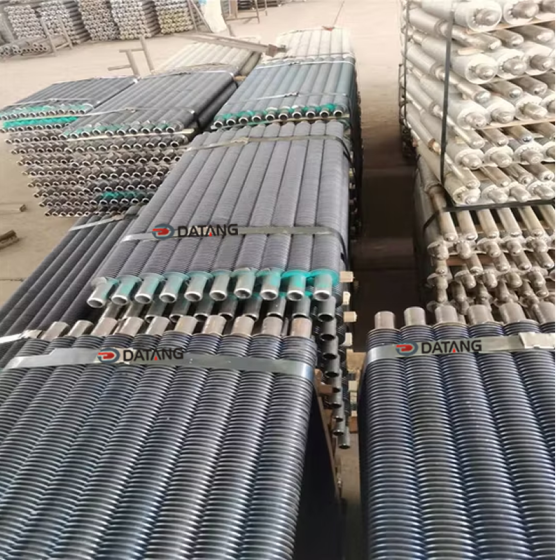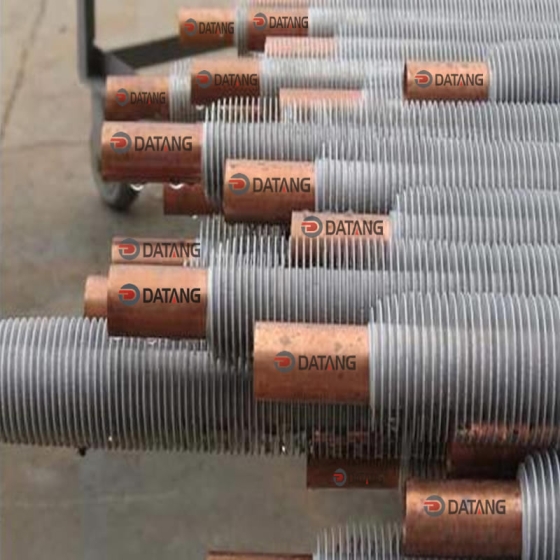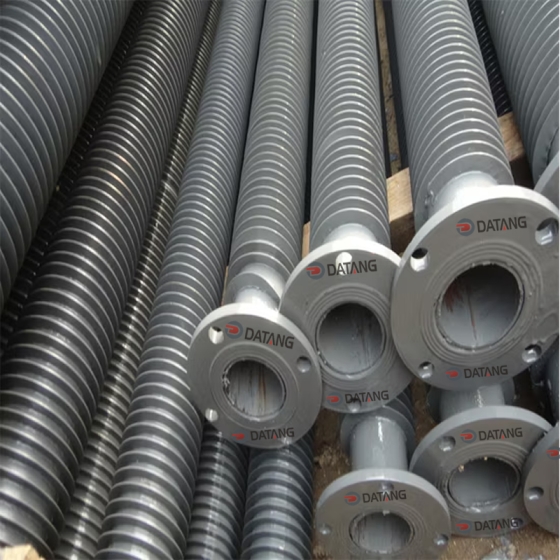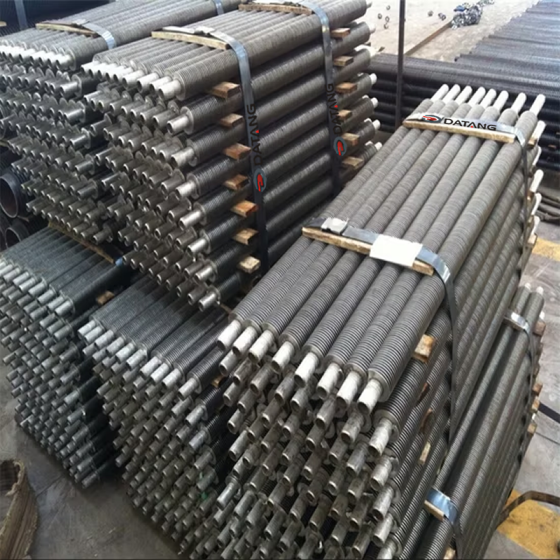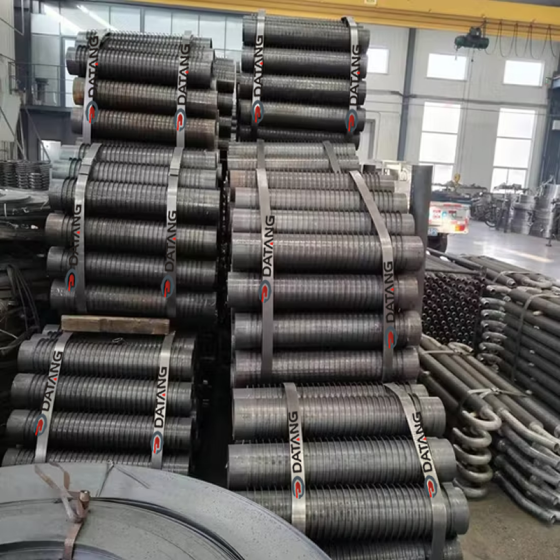Fin Fan Cooler Heat Exchanger is a highly efficient heat dissipation device that uses forced convection heat exchange with air. It consists of a fin tube bundle, a fan system, and a frame structure. It can cool down the process fluid without cooling water. Its core heat exchange element uses copper/aluminum fin tubes, with a heat exchange efficiency of 60-80%, saving more than 90% water compared to traditional water cooling systems.
| Model/Series |
Heat Transfer Area (m²) |
Working Pressure (MPa) |
Operating Temp. (°C) |
Material |
Fin Type |
Application Scenarios |
| KL-350 |
350 |
0.63 |
≤100 |
Aluminum rolled-fin tube |
Smooth fins |
Petrochemical, hydraulic system cooling |
| KL-454 |
454 |
0.63 |
≤100 |
Al/Cu-Al composite |
Serrated fins (ratio ≥12) |
High-temp. flue gas waste heat recovery |
| FL-20 |
20 |
1.6 |
≤100 |
Carbon steel (galvanized) |
Spiral fins |
Construction machinery hydraulic cooling |
| FL-45 |
45 |
1.6 |
≤100 |
Stainless steel 316L |
Louvered fins |
Marine platform corrosion-resistant cooling |
| GP9X2 Series |
85–110 |
4.0–6.4 |
≤400 |
09Cr2AlMo rare-earth alloy |
L-type rolled fins |
Petrochemical crack gas high-temp. Kühlung |
Key Parameter Explanations
- Flossen-Typen:
- Serrated fins: Enhance turbulence, improving heat transfer coefficient by 30%–50%.
- Louvered fins: Reduce dust accumulation, extending cleaning cycles to 12 months.
- Material Selection:
- Aluminum fin tubes for lightweight applications (density: 2.7 g/cm³).
- Stainless steel 316L for acidic environments (pH <4) with sulfur corrosion resistance.
Core Process Analysis of Air Coolers
The manufacturing processes of air coolers focus on finned tube bundles, utilizing material forming, Schweißen, and assembly technologies to achieve efficient heat exchange. The detailed processes are categorized into seven types:
1. Fin Tube Preparation Processes
- High-Frequency Welding
- Uses high-frequency current to heat the interface between fins and base tubes, achieving a weld fusion rate ≥95%, suitable for combining copper/steel base tubes with aluminum/copper fins.
- Advantages: Low cost, high efficiency (daily output: 300–500 tubes per machine).
- Laser Welding
- Employs high-energy laser beams for micron-level welds, reducing the heat-affected zone by 70%, ideal for high-precision copper fin tubes.
- Typical parameters: Power 3–6 kW, welding speed 1–5 m/min, weld strength ≥90% of base material.
- Cold Rolling Composite
- Mechanically bonds dissimilar metals (e.g., copper-aluminum composite tubes) with interface thermal resistance ≤0.01 m²·K/W, offering lightweight benefits.
2. Fin Forming Processes
| Process Type |
Technical Highlights |
Applications |
| Extrusion Molding |
Aluminum/copper billet extrusion (±0.1 mm precision) |
Mass production of standard fin tubes |
| Stamping |
Customized fins (e.g., V-shaped, serrated) via dies |
Special fin geometries |
| Spiral Winding |
Metal strips wound around small-diameter tubes (≤Φ6 mm) |
Compact radiators |
3. Tube Processing
- Cutting & Straightening: Laser cutting (±0.2 mm precision), hydraulic straightening (straightness ≤1 mm/m).
- Flaring/Reducing: Enhances sealing for flange/quick-connect fittings.
4. Assembly & Welding
- Modular Assembly: Tube bundles and frames fixed with bolts/sealant (±0.5 mm tolerance).
- Multi-Process Welding:
- TIG welding for stainless steel tubes/flanges (ASTM B774 compliance).
- High-frequency welding for fin tube-header connections (50% faster than brazing).
5. Surface Treatment
| Method |
Function |
Parameter |
| Anodizing (aluminum fins) |
10–30 μm oxide layer (salt spray ≥1,000 hr) |
Hardness ≥300 HV |
| Nickel Plating (Kupfer) |
8–15 μm anti-corrosion layer (pH 2–12) |
Adhesion ≥10 MPa |
| Electrostatic Coating |
Epoxy coating (-40°C~120°C, adhesion Grade 1) |
Thickness 60–120 μm |
6. Quality Control
- Non-Destructive Testing: X-ray inspection (defect detection ≥99%), helium mass spectrometry (leak rate ≤1×10⁻⁶ Pa·m³/s).
- Performance Testing:
- Wind tunnel test (heat exchange deviation ≤±5%).
- Pressure test (1.5× design pressure for 30 min, leak-free).
7. Industry Comparison & Process Optimization
| Process |
Market Share |
Advantages |
Limitations |
| High-frequency welded fins |
65% |
Cost-effective, high output |
Fin height limit (≤30 mm) |
| Laser-welded copper fins |
15% |
High precision, heat-resistant |
30–50% higher equipment cost |
| Cu-Al composite fins |
20% |
Lightweight, cost-efficient |
Requires corrosion-resistant coating |
Key Parameter Comparison
| Process |
Heat Transfer Coefficient (W/m²·K) |
Temp. Limit |
Cost Index |
Applications |
| High-frequency Cu fins |
350–450 |
≤200°C |
1.0 |
Chemical, power plants |
| Laser-welded stainless fins |
280–350 |
≤400°C |
1.8 |
High-temp. gas treatment |
| Cu-Al composite fins |
300–380 |
≤150°C |
0.7 |
HVAC, renewable energy |
By optimizing material and process combinations, air coolers can operate in -40°C to 400°C environments, meeting diverse cooling demands across industrial and energy sectors.
Core Application Fields of Air Coolers
1. Petroleum & Chemical Industry
- Typical Scenarios:
- Cooling cracked gas, heavy oil temperature reduction, reactor temperature control15
- Corrosion-resistant designs (nickel-plated/stainless steel finned tubes) with temperature resistance up to 400°C
2. Power & Energy Sector
- Steam Turbine Exhaust Condensation:
- Replaces traditional water-cooling systems, achieving >90% water savings via dry cooling
- Transformer/Generator Cooling:
- Lightweight aluminum fin tubes reduce operational energy consumption
3. HVAC Systems
- Central Air Conditioning:
- Finned tube heat exchangers enhance heating/cooling efficiency (COP improvement ≥30%)
- Building Heating:
- Copper-aluminum composite fin tubes adapt to -30°C~120°C conditions
4. Industrial Manufacturing
| Subfield |
Application Scenarios |
Technical Parameters |
| Metallurgy |
Blast furnace waste heat recovery |
400°C, 200–1000 kW heat exchange |
| Food Processing |
Hot air circulation in drying systems |
Food-grade coating, pH 3–11 resistance |
| Pharmaceutical |
Reactor cooling/sterile temp. control |
Clean design, surface roughness Ra≤0.8μm |
5. New Energy & Environmental Protection
- Solar/Wind Energy:
- Power equipment cooling (IP55 protection, extreme climate adaptability)
- Waste Gas Treatment:
- Flue gas desulfurization systems with sulfur-resistant fin tubes (coating thickness ≥15μm)
6. Specialized Applications
- Data Center Liquid Cooling:
- Copper fin tubes + variable-frequency fans achieve ≥200 W/cm² cooling density
- Aerospace:
- Titanium alloy fin tubes reduce weight by 40% with pressure resistance ≥6 MPa
Key Application Parameter Comparison
| Industry |
Heat Exchange Medium |
Temp. Range |
Fin Type |
Power Density |
| Petrochemical |
High-temp. oil/gas |
80°C–400°C |
Serrated fins (Edelstahl)17 |
300–600 kW/m³ |
| Power |
Steam |
40°C–150°C |
Spiral fins (Kupfer)68 |
150–400 kW/m³ |
| Data Centers |
Coolant |
20°C–45°C |
Integrated plate fins (Aluminium)57 |
200–800 W/cm² |
Optimized fin tube designs (fin-to-tube ratio 10–20×) and modular structures enable air coolers to cover >80% of industrial heat dissipation scenarios, positioning them as critical equipment for energy conservation.
 dtfinnedtube.com
dtfinnedtube.com

